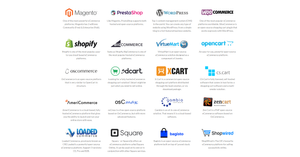How to Write Product Descriptions [that sell] for Your eCommerce Store
Have you ever wondered what drives you to pull out the credit card and push the "Buy Now" button when you're browsing products online?
Whether or not you realize it, the product description is almost certainly a factor in this decision.
As a consumer, you intuitively recognize good product descriptions—because they make you want the product in question. However, when you start an eCommerce business, you might find yourself struggling to write product descriptions or understand what will motivate your customers to complete a purchase.
Luckily, you can take specific and surprisingly straightforward steps to start creating product descriptions that sell, even if you don't consider yourself a writer or a marketing expert.
I will show you how, but first let's understand why product descriptions are so important.
Let's dive right in.
Why Do Product Descriptions Matter?
Before we dive into how to create product descriptions, let's take a moment to talk about why you're doing this. Product descriptions are hugely important for almost any online store, but they are essential for newer eCommerce entrepreneurs. Here's why.
They make it easier for potential customers to find your site
Unique, detailed product descriptions will improve your website's SEO (search engine optimization). Search engines will grade your eCommerce website based on the amount and quality of the content it contains. Suppose your product descriptions are robust, well-organized, and include relevant keywords. In that case, they will improve your SEO and help you get more organic traffic on your website.
They establish credibility and build brand awareness
When people hear about a brand for the first time, they're usually skeptical. If they're interested in your product, they'll probably spend some time browsing your website looking for clues as to whether they should trust your brand.
Excellent product descriptions (including high-quality photos and social proof like reviews or testimonials) can show the quality of your products and build the reputation of your brand.
They allow customers to imagine the product
Selling products online offers many advantages over selling them in a physical space—but there's one overwhelming disadvantage. Potential buyers can't touch, smell, hear or taste the product before buying. All they have are the photos you upload and the description you provide. Well-written and detailed product descriptions help them fill in the sensory gaps with their imagination.
How to Write Great Product Descriptions in 7 Steps
Recognizing the importance of product descriptions is one thing, but actually creating them is another. This is especially true if you're a new eCommerce entrepreneur working with a shoestring budget and you're doing all your web development and marketing yourself.
But the fact is, you don't have to be a professional copywriter to write effective, compelling product descriptions. Here's how to get started.
Study Excellent Examples
Looking at product description examples from other companies can be hugely helpful. This list of eCommerce product description examples is an excellent place to start. Then you can narrow your focus to examples from companies that sell similar products or have the same target market.
As you start looking through examples, pay attention to every tiny detail. How would you describe the overall tone (playful and casual, or serious and educational)? What specific words do they use?
What phrases jump out at you, and how do they make you feel? Also, look at how much detail is provided, how it's organized, and how the description complements the product photos.
The more product description examples you study, the more you'll begin to understand what a good product description sounds like and what elements you should include in your own descriptions.
Adopt a Buyer's Mindset
Let's say your potential buyer has decided they're going to purchase a new computer bag since their current bag is getting worn out. After some searching or ad-clicking, they stumble upon your site and start looking at the bags you have listed for sale. At this point, what is the buyer looking for?
They're probably considering the price, product quality, how the bag will look with their typical outfits, and usability factors like size and organization. That means your product description should speak to each and every one of their considerations.
Whatever your product may be, think about what information your potential customers will be looking for as they browse their options. Then make sure your product descriptions provide this information.
Use the Right Words
People make most buying decisions with their subconscious, so an effective product description should tap into the reader's emotions and imagination.
This might sound like a lofty and nebulous goal, but one easy way to do it is to use verbs and sensory adjectives in your product descriptions. These words increase the power of your copy by allowing readers to imagine themselves using the product and experiencing it with all their senses.
Another powerful word to include in product descriptions is the word "you." By addressing the reader directly, you're shifting their focus from the product itself (which is good) to the benefits it will offer them (which is much better). Using "you" creates a story about how the product will fit into your customers' lives.
Show, Don't Tell
These days, most consumers are skeptical of business advertising. As a result, it's not enough to simply promise your customers a benefit. Instead, connect the dots and show precisely how your product can benefit your consumer.
You can do this by thinking critically about what makes your product valuable and then explaining it clearly and straightforwardly. For example, let's say you're selling high-quality notebooks.
Your target customer is drawn to the specific feeling of writing, longhand, on high-quality paper.
Don't say something generic like, "You'll love writing in this notebook." Instead, explain how the design of the product and the quality of the construction make your notebooks a delight to touch and write in.
Don't Skimp on the Details
Remember, when people are shopping online, all they have is the product description and the photos. That means a good product description will include all the specs: materials, construction, dimensions, features, warranty, maintenance, etc. This is especially important for clothing and shoes since potential buyers will be wondering exactly how the product will fit and feel.
Be Organized
Product descriptions often include several distinct parts. Taking a look at the example product descriptions above, you'll see that many examples are broken into several distinct parts: the description itself, a bulleted list of features and specs, and potentially a sizing section, as well.
This structure makes it easier for the reader to quickly scan the description and pick out the information they need. The more scannable your copy, the more likely that potential customers will read it in the first place. If you write one long block of text, your customer may not pick up on the important details they're looking for.
Make a List and Check It (at Least) Twice
And by list, we mean "editing checklist." Grammatical errors and typos are an easy way to undermine your own brand authority. They make you look unprofessional (which is especially dangerous for small eCommerce businesses that are just starting out), and they'll stop potential customers from taking you seriously.
Once you write your product descriptions, carefully proofread them. Have a professional editor or detail-oriented friend give them a final check.
Or at the very minimum, use specialized software or service like Grammarly.
Product Descriptions: What Not to Do
Let's wrap up this how-to guide with a quick warning on one critical mistake to avoid: Don't be generic.
There are so many different ways to fall into this trap. Suppose you're reselling products that come from a manufacturer. In that case, it's easy and tempting to use the manufacturer's product description in your online store. If you haven't finished defining your brand voice or your target market, you might write product descriptions that appeal to some imaginary buyer rather than your buyers. If you sell multiple similar products, you might decide to use similar (or nearly identical) descriptions for each.
The problem with generic product descriptions is this: If potential buyers don't know why your company and your products are unique, they have no reason to choose you over the competition. Unique, personalized, and targeted product descriptions will allow you to connect directly with potential customers and transform them from browsers into buyers.
The good news is you can write great product descriptions for your online store even if you aren't a professional writer. If you know your customers, you believe in your product, and you can envision the magic that will happen when the two collide, you're practically already there. Now it's time to translate those ideas into powerful product descriptions.
If you're still choosing an eCommerce platform, check out our complete guide to the best eCommerce platforms for small businesses.
Author: Drasko Georgijev
I'm a financial technology professional with 15+ years of experience in payment cards, eCommerce, transaction processing and switching.
From time to time, I'm sharing some helpful tips, tactics, and news about Digital Commerce and Fintech.
So don't forget to share this post and subscribe to my mailing list.
Got questions? Ping me on LinkedIn.





